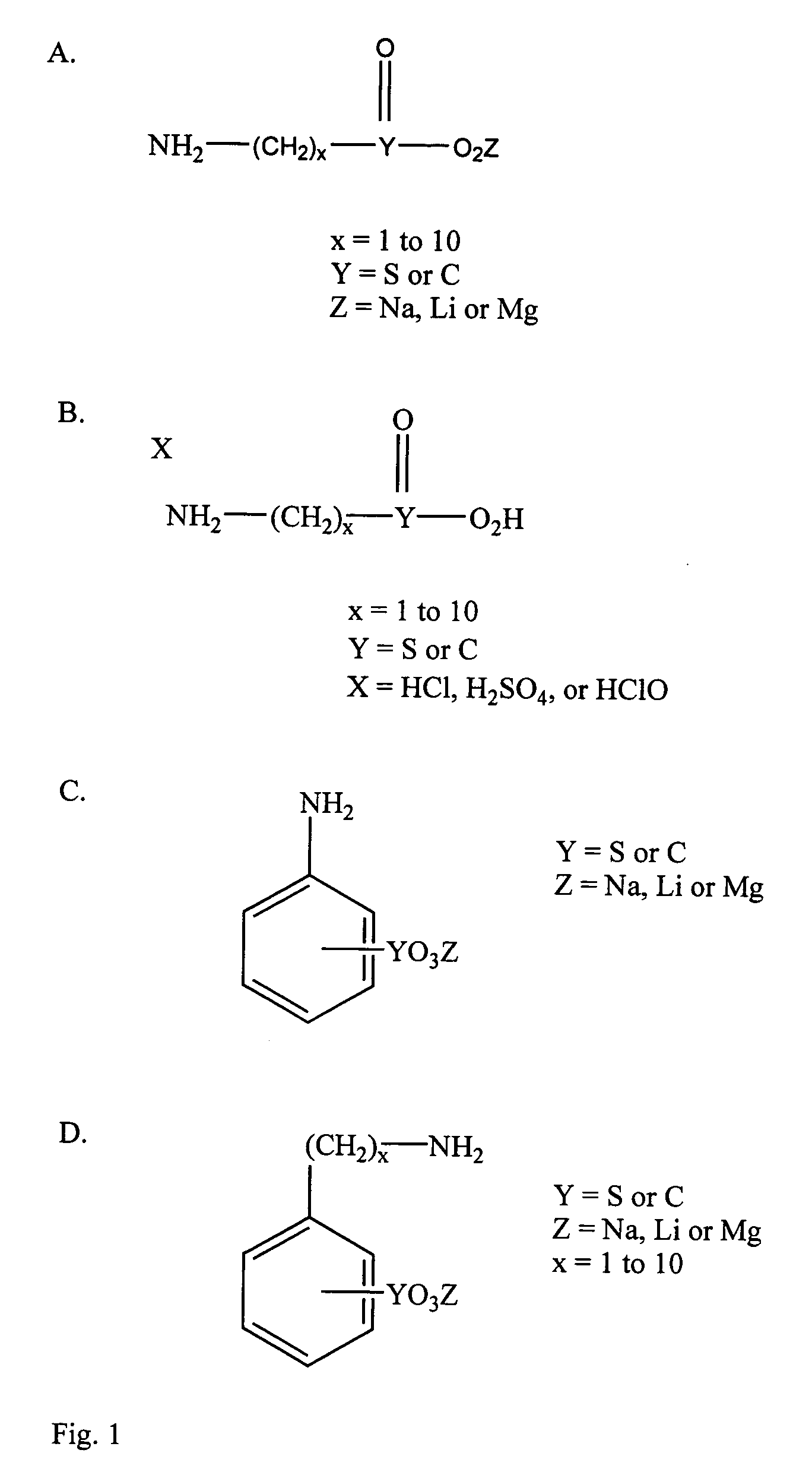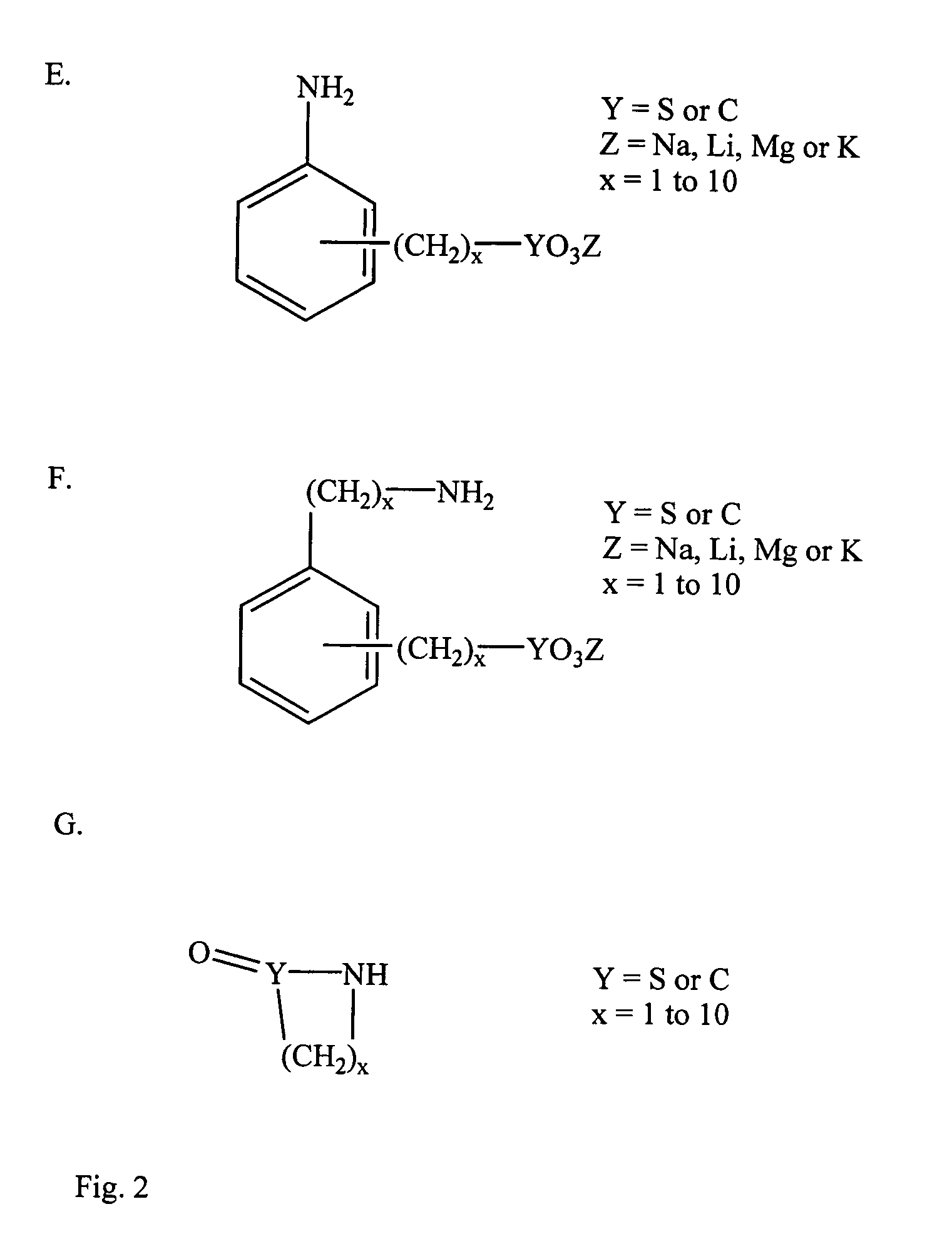Method of removal of carbonyl compounds along with acid gases from cracked gas in ethylene process
a technology of carbonyl compounds and crack gas, which is applied in the direction of hydrocarbon oil treatment products, gaseous mixture working up, refining with aqueous alkaline solutions, etc., can solve the problems of obstructing the flow of liquid through the system, and achieve the effect of preventing plugging and fouling of equipment and reducing the concentration of oxygenated hydrocarbons
- Summary
- Abstract
- Description
- Claims
- Application Information
AI Technical Summary
Benefits of technology
Problems solved by technology
Method used
Image
Examples
example 1
[0050] Caprolactam (18 g, 0.1593 mole), sodium hydroxide (7 g, 0.175 mole), and 75.0 g water were added to a clean round bottom flask equipped with a thermometer, stirrer and condenser. The mixture was well agitated and heated to 105-120° C. for a period of six hours. Small samples were periodically withdrawn and checked for conversion using HPLC. The conversion of epsilon caprolactam to six amino hexanoic acid was greater than 75%.
example 2
[0051] Twenty ml of 10% NaOH solution were added to a 50 ml stoppered conical flask. Desired inhibitor in solution or in solid form was also added, followed by the addition of 1 ml vinyl acetate. The mixture was shaken well and kept in an oven for 24 hours at 55° C. A blank was prepared wherein all reagents except the inhibitor were added. At the end of 24 hours the contents of the flask were visually checked for clarity or any deposits, and UV readings were measured. The results, as an average of two or free reading, are shown in the Tables below.
TABLE 1Use of individual compounds to inhibit polymer formation.TransmittanceRelativeExptMoleat 800 nmabsorbanceNo.Compoundsgmsratio(T %)at 720 nmObservation 1Blanknilnil0.52.5Red hazy liquidwith precipitate 2Sodium0.20750.12568.50.2575Red slightly hazydithioniteliquid 3Sodium0.47150.25089.550.0475Red clear liquiddithionite 4Sodium0.9430.5900.042Faint red cleardithioniteliquid 5Sodium1.8861.080.350.09Colorless liquiddithionite 6Sodium0.1...
example 3
[0053] Twenty ml of 10 % NaOH solution were pipetted into a 50 ml stoppered conical flask. One ml of vinyl acetate solution was added. The mixture was shaken well and kept in an oven for 15 minutes. During this period, the vinyl acetate was hydrolyzed and polymerized to form insoluble products. After 15 minutes the desired amount of inhibitor was added. One control sample was prepared without inhibitor. The flask was shaken well and kept in an oven for 24 hours. After 24 hours, the flask was checked visually for clarity and for any deposits. In some cases, UV transmittance was measured for comparison.
TABLE 3Use of compounds and their blends to dissolve formed polymersTransmittanceRelativeExptMolesTotalat 800 nmabsorbanceNo.Compoundsgmsmolesofmoles(T %)at 720 nmObservation 1blanknilnilnilnil0.52.5Red turbidliquid withpolymerparticles 2Sodium0.9430.5—0.562.50.202YellowDithioniteclear liquidwith fewparticles 3Amino0.1250.0870.0870.52.709Same ascaproic acidabove 4Sodium0.9430.50.58797...
PUM
| Property | Measurement | Unit |
|---|---|---|
| transmittance | aaaaa | aaaaa |
| molar ratio | aaaaa | aaaaa |
| weight percent | aaaaa | aaaaa |
Abstract
Description
Claims
Application Information
 Login to View More
Login to View More - R&D
- Intellectual Property
- Life Sciences
- Materials
- Tech Scout
- Unparalleled Data Quality
- Higher Quality Content
- 60% Fewer Hallucinations
Browse by: Latest US Patents, China's latest patents, Technical Efficacy Thesaurus, Application Domain, Technology Topic, Popular Technical Reports.
© 2025 PatSnap. All rights reserved.Legal|Privacy policy|Modern Slavery Act Transparency Statement|Sitemap|About US| Contact US: help@patsnap.com


